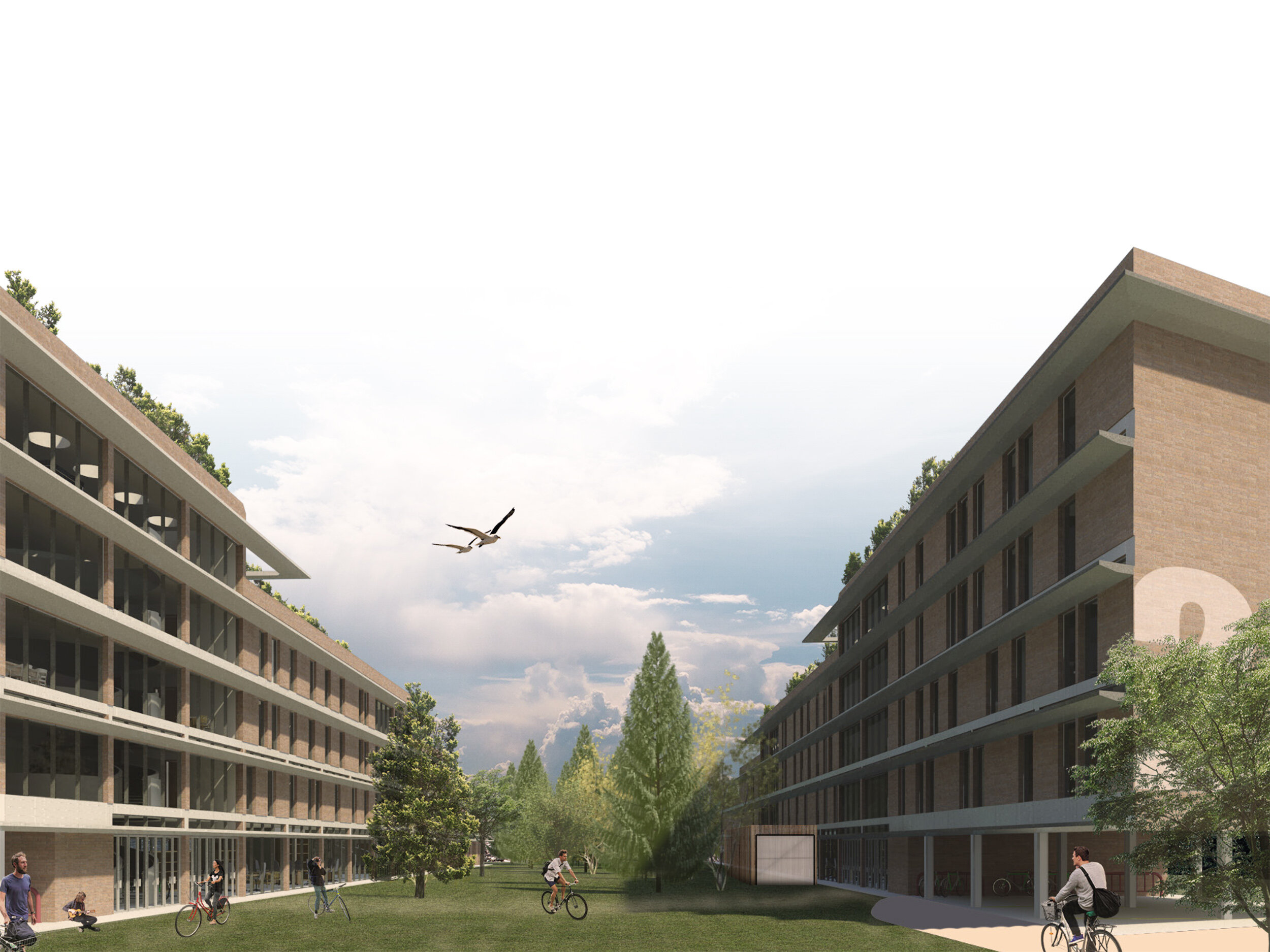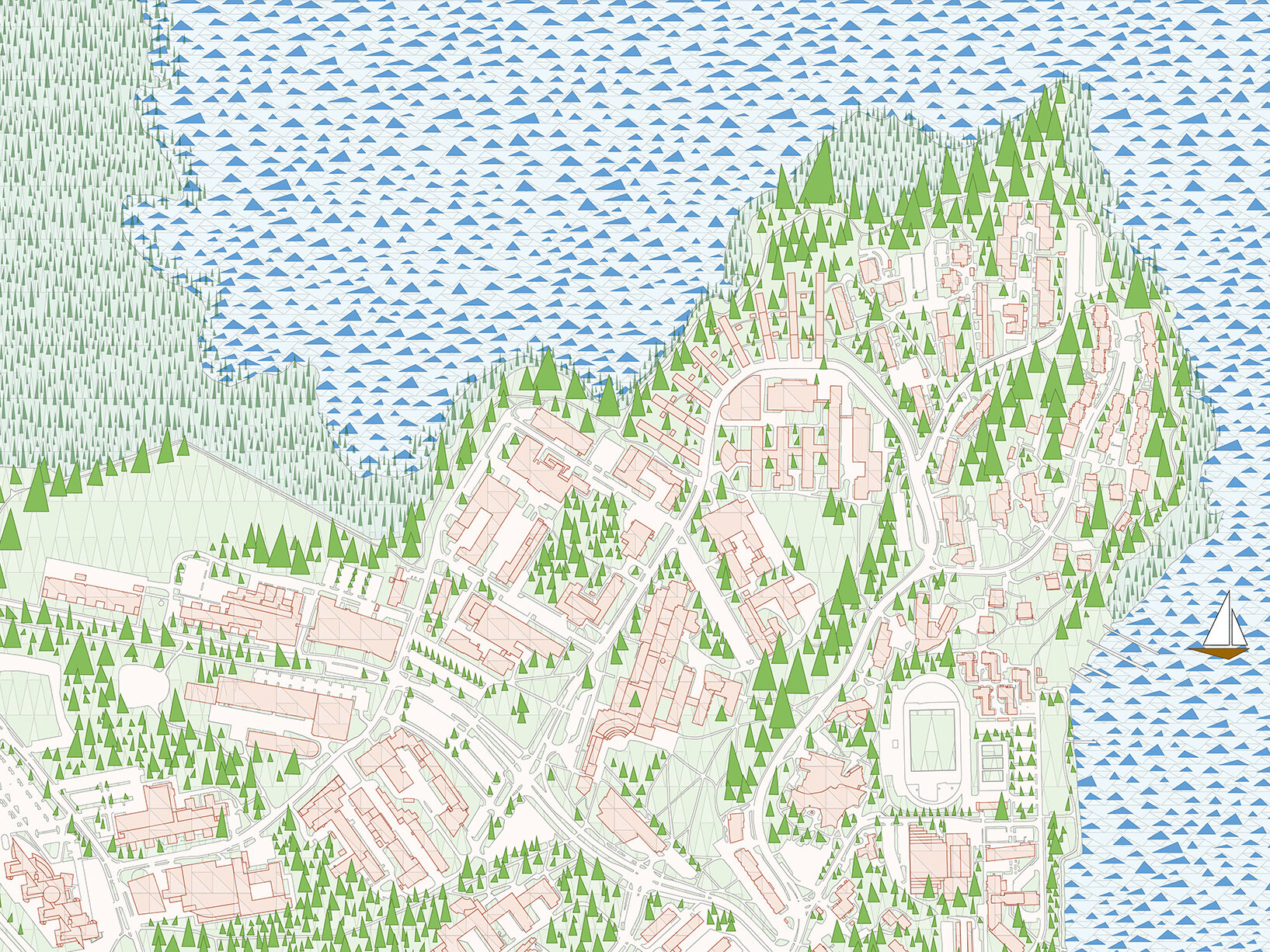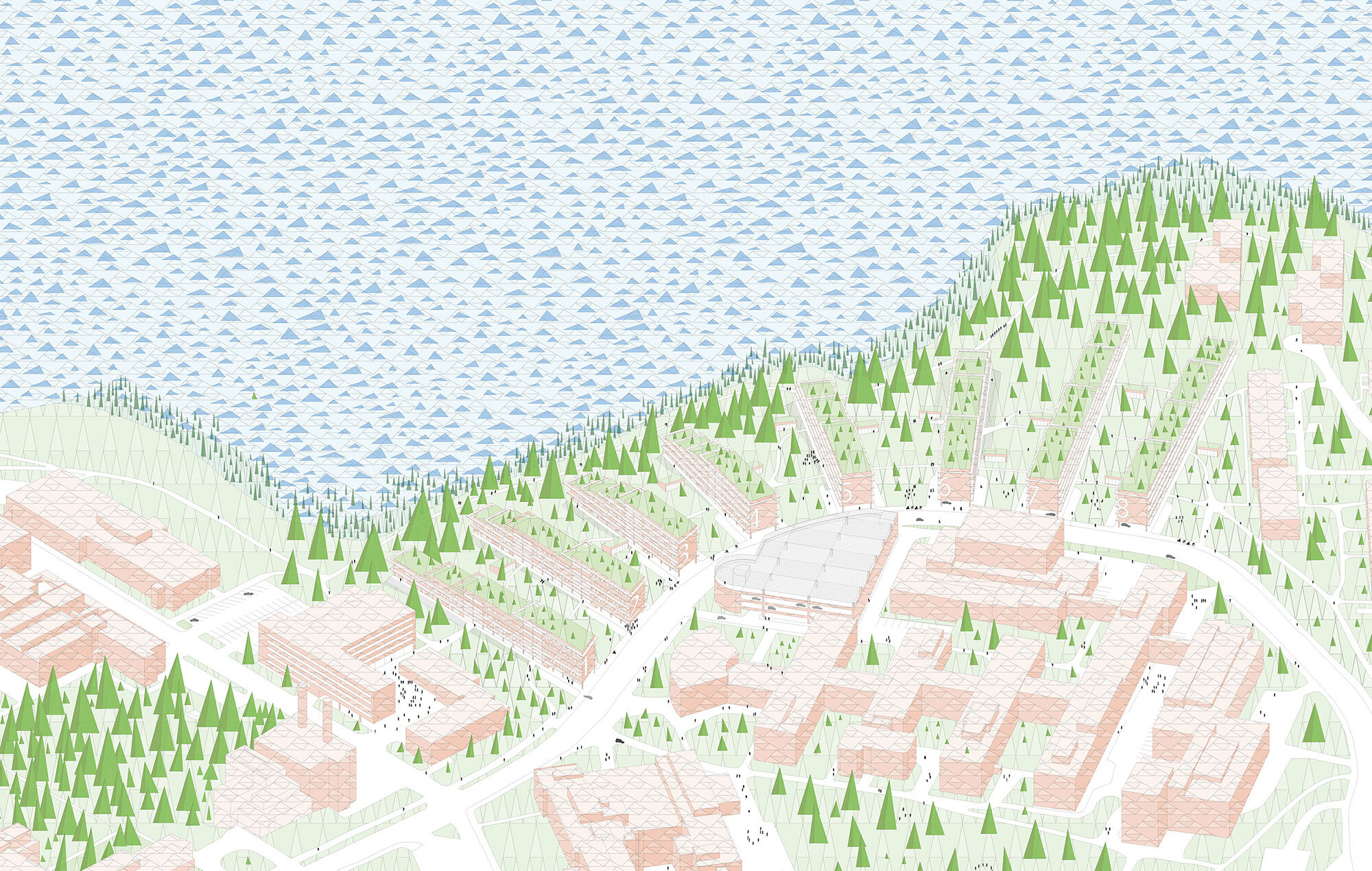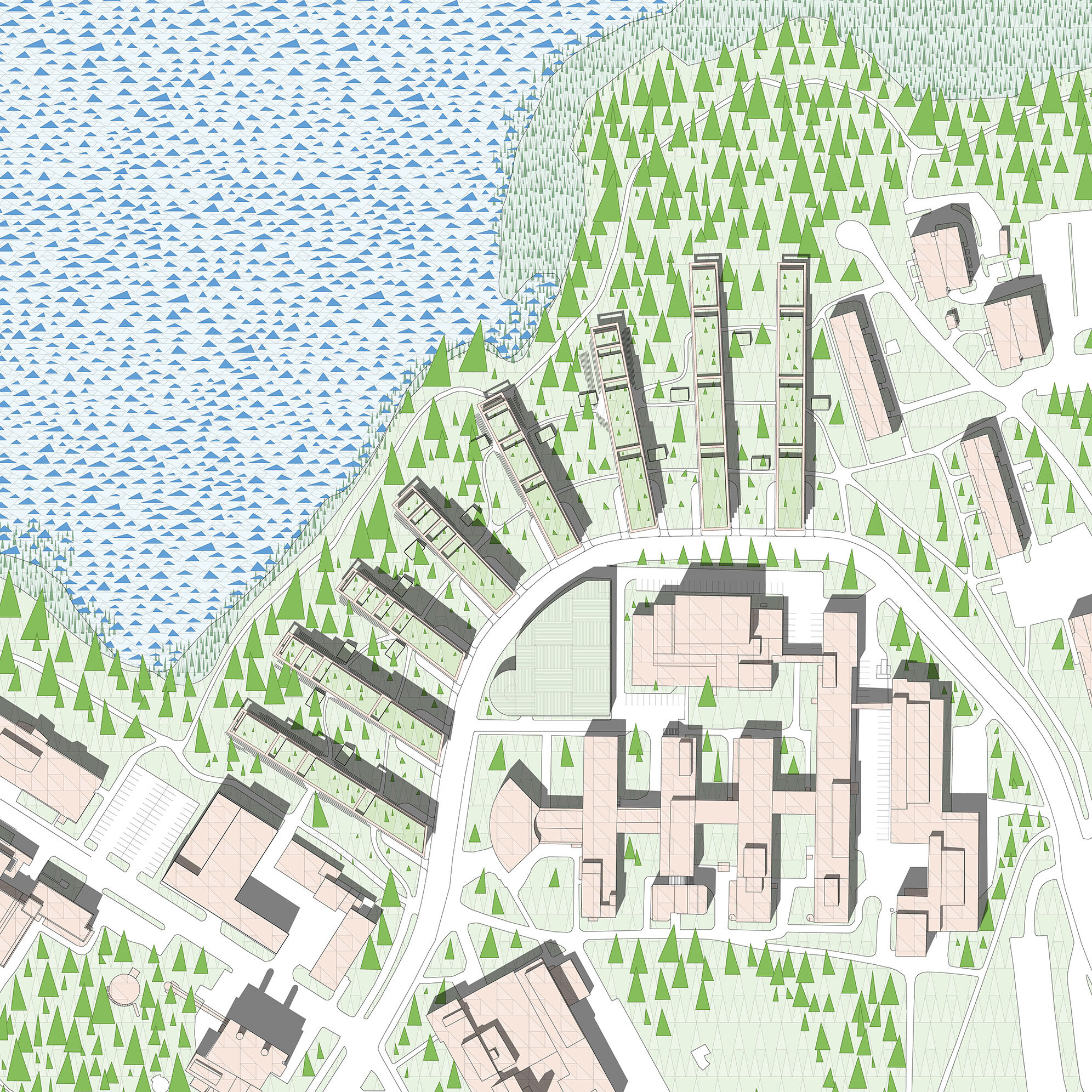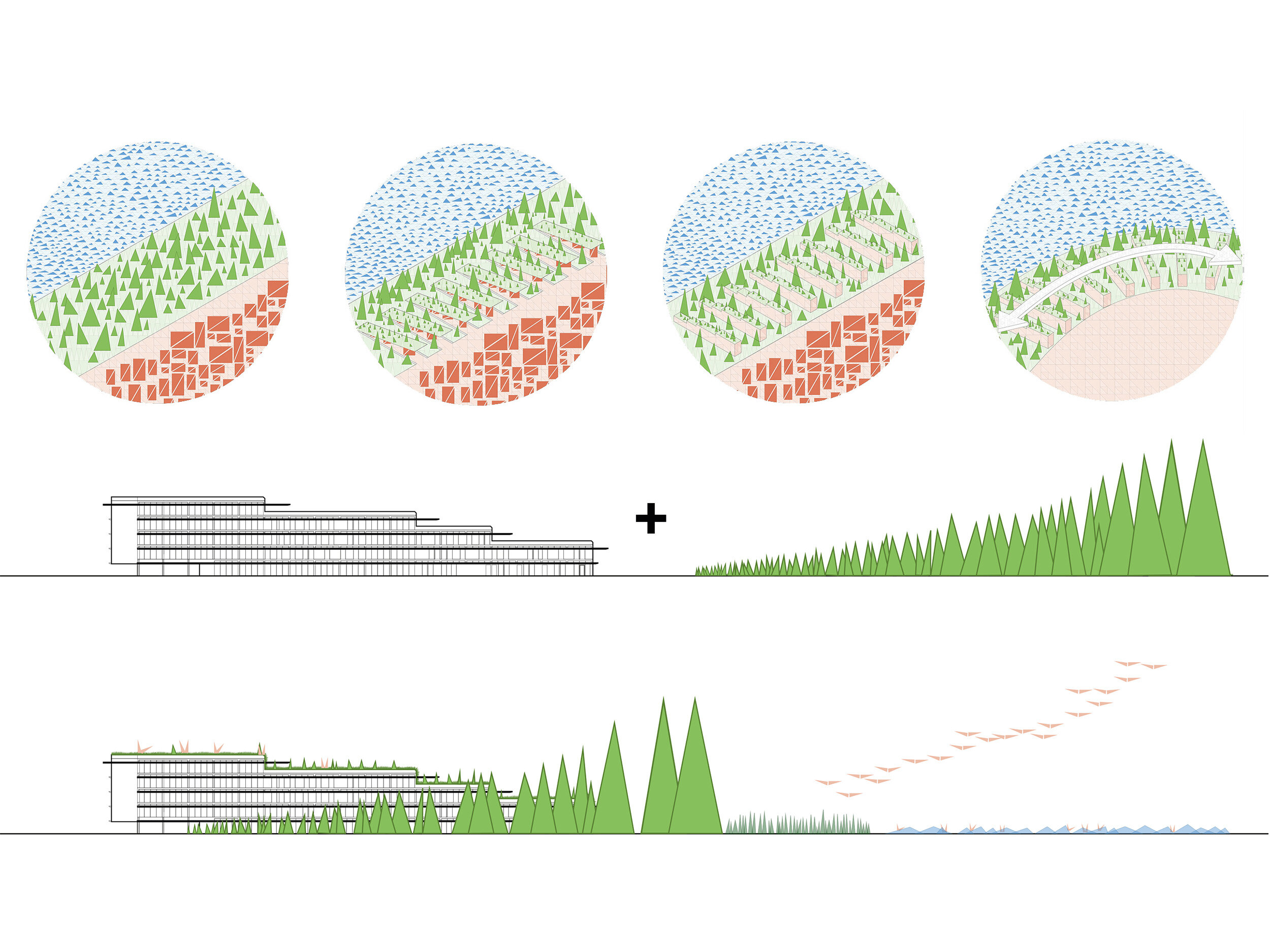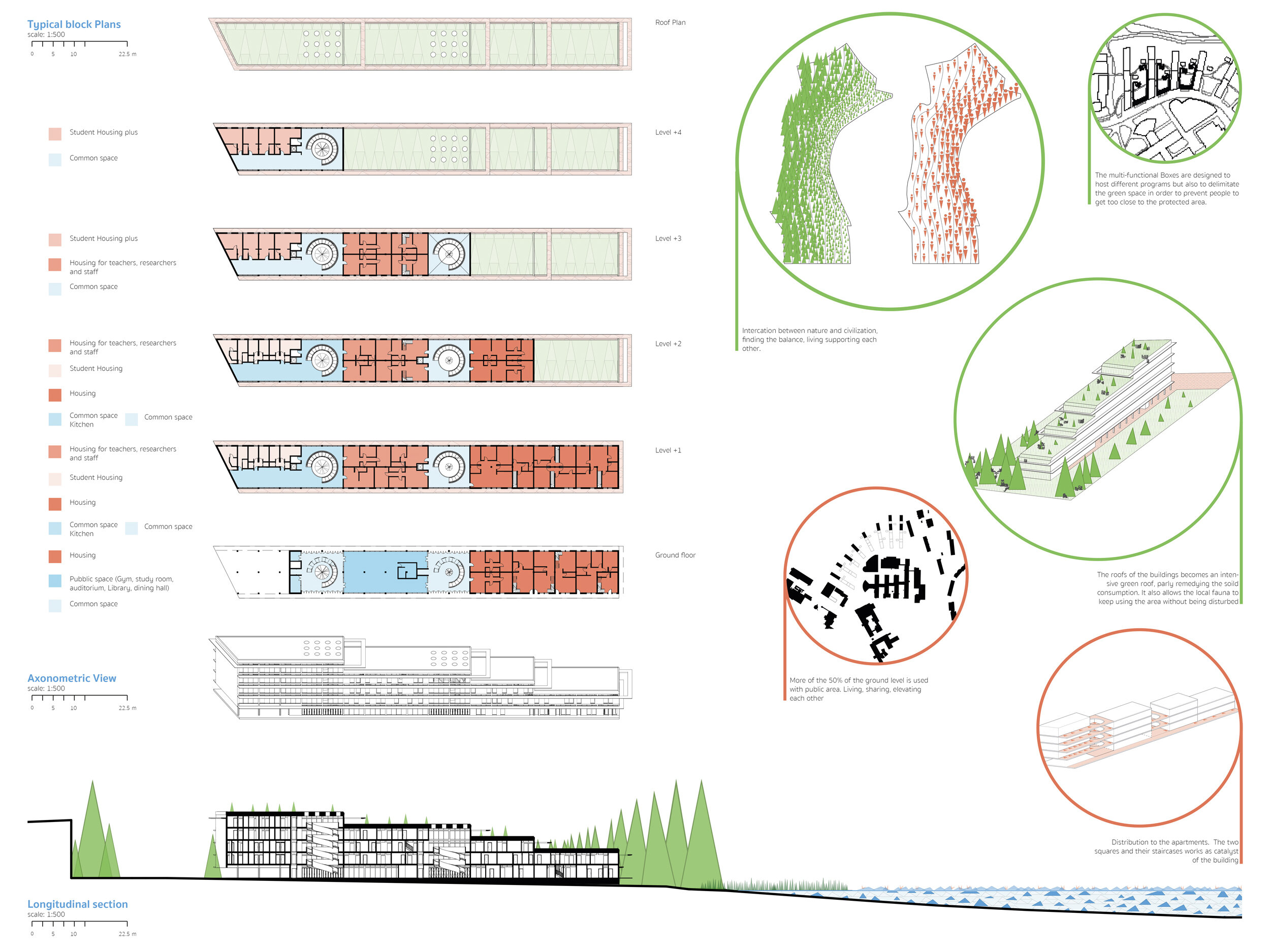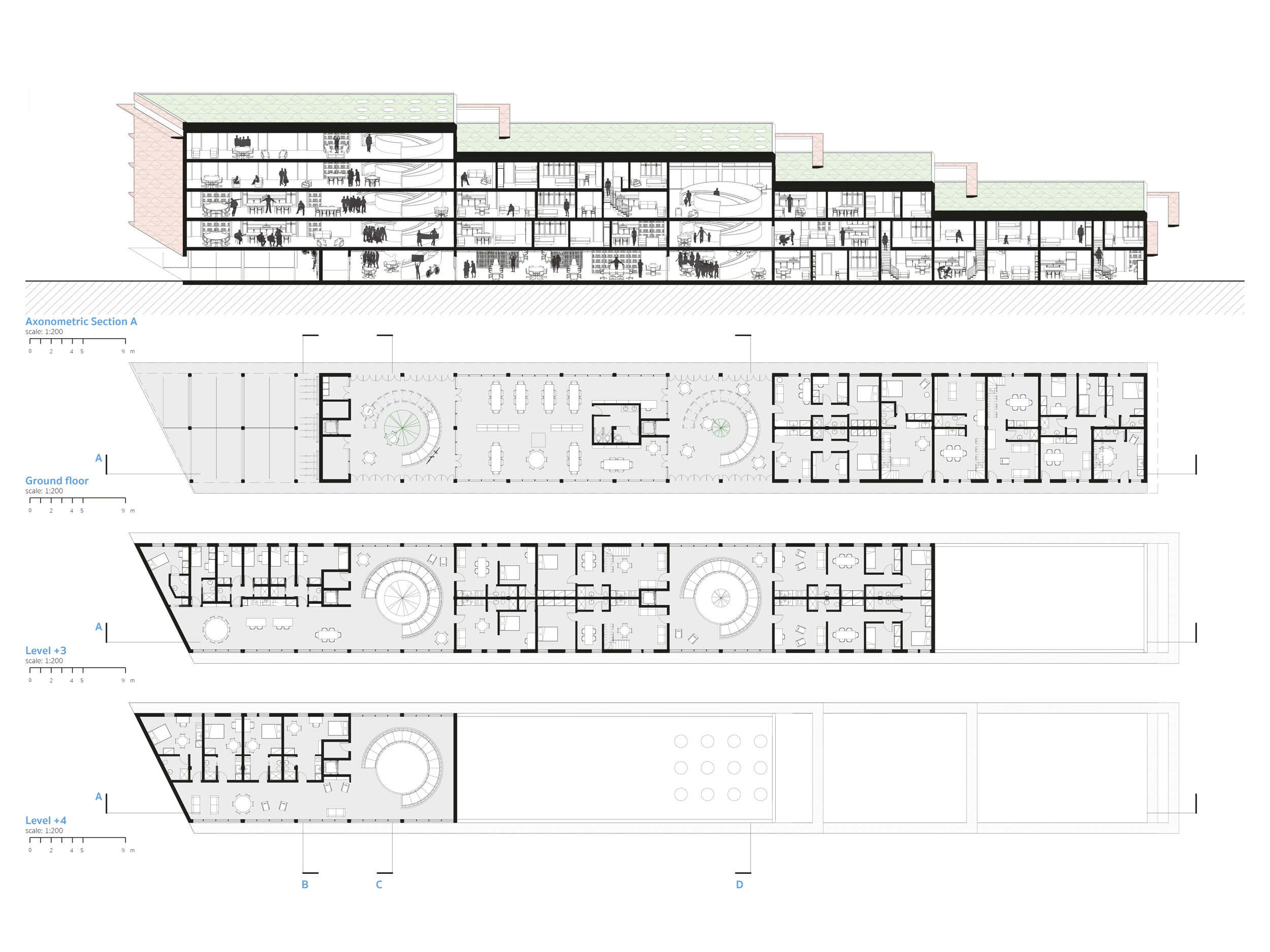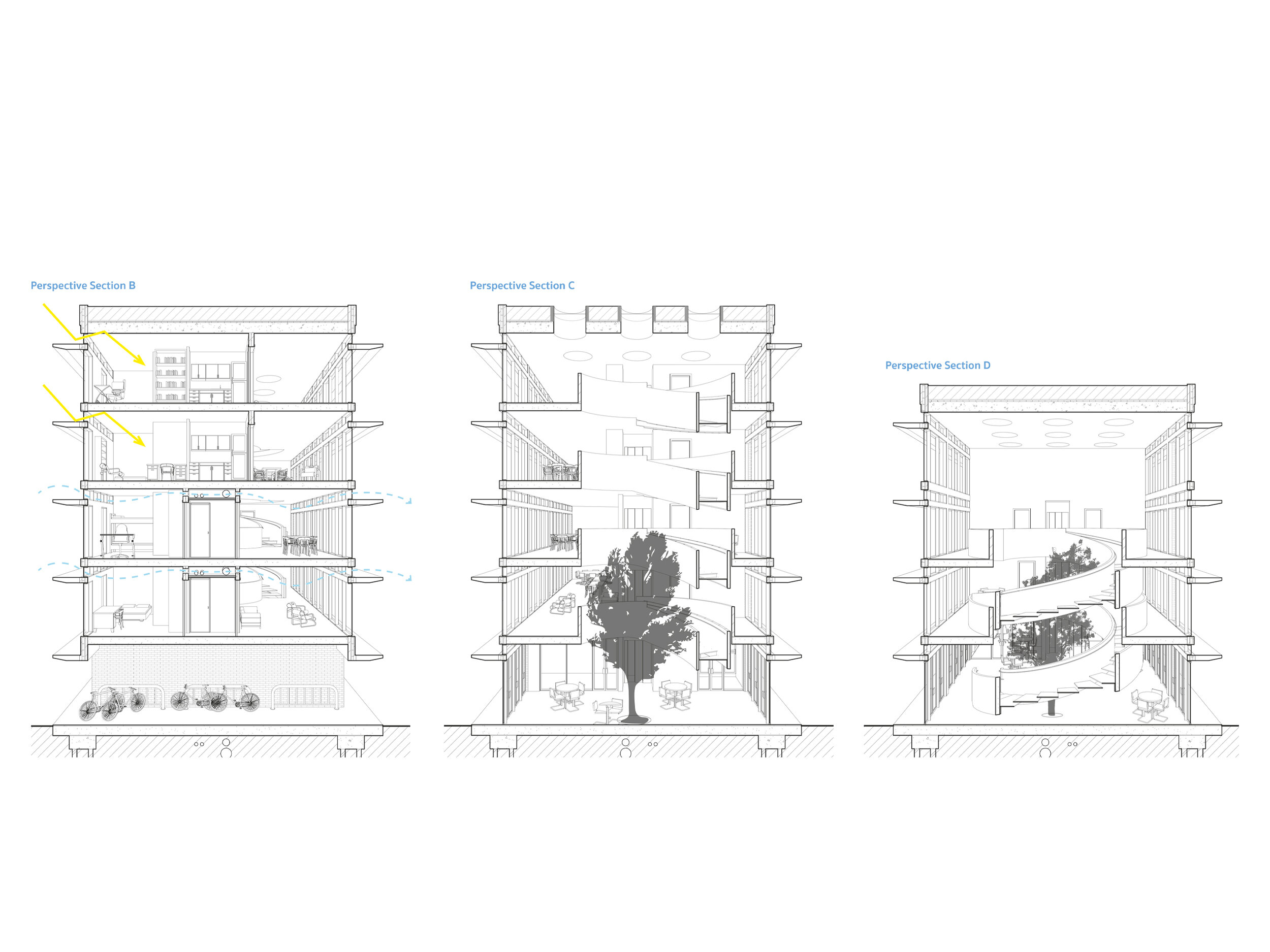Interactions
Human vs Nature, Nature vs Architecture, Architecture vs Culture, Culture vs Human.
The interaction of humans with the world has become more a “versus” than “with” during the centuries. In this worldwide trend there has always been exceptions of people, communities and countries that have been developing a strong and mutual relation with nature.
The complex is composed by eight blocks, which have a maximum of floors each. Their shape and position are the results of the interaction between nature and society, penetrating each other. The closer to the street the higher the building, the closer to the shore the lower and calmer it gets.
In a decreasing process it gets lower, vanishing and becoming one with the nature.
This compenetration affects most of the aspects related to the project; the disposal of the apartments, as we will see, is strongly related to this aspect. The closer to the shore the quieter the surrounding has to be, in a global respect of the Area 2000 and its animals.
The apartments are divided in student housing, researcher/hosts and families. The student dwellings are closer to the street and are structured on two floors as single or double rooms with shared bathrooms and kitchen, and on two floors as single or double rooms with private kitchen and bathrooms. In the central part of the blocks bigger apartments find place. These are meant to host researchers, hosts or professors, but they are flexible and big enough to host also small families.
As mentioned before, normal housing finds place in the last part of the block. The apartments have different sizes, from 40 up to 125 sqm and can be duplex or simplex.
The connection to the apartments works in two different ways; for the normal housing the inhabitants will follow a covered path along the block, accessing home from outside in a more private way, special housing access through one (or more than one) stairwell squares. These, with a surface of 100sqm, are indeed closed squares, that give access to a central rounded staircase. These spaces are meant to be the hearth of the blocks. They all face the public area, holding a strong relation with the outside, bringing the nature inside the building; a big tree in the center of the stairwell strengthens this relation.
The public nature of this area is also reflected in the buildings; underneath the first part of the blocks, at the ground level, 48 parking lots are hosted (6 each block). The second (and in two cases also the third one) part of the blocks contains public functions. This, combined with the boxes, emphasizes the public character of the stripe. The public spaces inside the buildings are designed not only to have a strong relation with the outside, but also to be as flexible as possible. The idea was to offer a space in which the function that is gonna be hosted is chosen by the inhabitants of the block, responding to their common needs or interests.
Through this process more than the 50% of the total footprint of the buildings is public.
An important aspect of the designing phase was the sustainability of the project. The proximity to such a sensitive natural area with its flora and fauna has strongly influenced the buildings. The decreasing height of the buildings is meant not only to give a “vanishing into the nature” effect, but it is mainly meant to respect birds and their migrations. Another important aspect was to undermine the soil as less as possible. The nature flows between the blocks in a natural way, letting the local plants and trees grow in a controlled way, thus protecting the environment of local fauna.
The facades facing the shore are green and the rooftops are green intensive rooftops, giving the chance to small trees shrubbery to grow. This not only recovers the damaged soil, but helps to control the stormwater management. The excess of water is collected underneath the garage in a catch basin and after a process of purification will be reused as gray water.
The bricks facade, Otaniemi’s typical material, is completed with cornices that runs all around the blocks. Those, lined in their lower part with wood and in their upper part with white tiles, work as brise soleil and as a light shelf, illuminating through reflection with a diffuse light the rooms.
The process that has characterized the project area is the result of a deep comprehension and respect of the heritage, both cultural and natural, that is impregnated in Otaniemi.
The buildings try to lowly respect the huge heritage that Alvar Aalto left to the campus. The straight volumes, the clean lines and the decreasing height are the bonds between these two heritages.
The bricks are an expressive material. Combining this material with the tension generated by the vertical articulation of the windows and the horizontality of the cornices and of the white tiles, we tried to give new rhythm and dynamism to the building, reinterpreting the classical elements of Aalto’s architecture with a contemporary approach.
Program
Urban - campus and dormitory
Site
Espoo, Helsinki, Finland
Competition
Europan 13
Team
llabb architects

